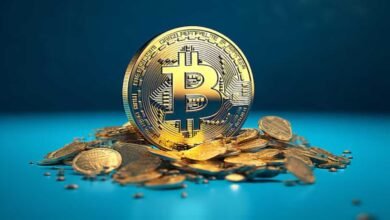
Coin
XRP Coin: Revolutionizing the Financial Landscape
Introduction (500-700 words)
- Overview of XRP and Ripple Labs
- The creation of XRP by Ripple Labs.
- Ripple’s mission and its approach to revolutionizing cross-border payments.
- How XRP differs from Bitcoin and Ethereum.
- A brief history of XRP and Ripple Labs.
- Significance in the digital currency landscape.
Chapter 1: The Genesis of XRP (800-1,000 words)
- The Creation of Ripple Labs
- Founding of Ripple Labs in 2012 by Chris Larsen and Jed McCaleb.
- The vision behind Ripple Labs.
- The technological innovation behind XRP and its protocol (RippleNet).
- XRP’s Development
- How XRP was developed to overcome Bitcoin’s scalability issues.
- Goals of XRP: faster, cheaper, and more scalable transactions.
- The initial coin distribution and structure.
- Differences from traditional mining models.
- The Role of RippleNet
- RippleNet as a network of payment providers.
- How RippleNet is integrated with financial institutions globally.
- Benefits of RippleNet for cross-border transactions.
Chapter 2: The Technology Behind XRP (1,200-1,500 words)
- The Consensus Algorithm
- XRP’s unique consensus algorithm compared to Bitcoin’s proof-of-work and Ethereum’s proof-of-stake.
- How XRP achieves transaction validation and network consensus.
- Benefits of XRP’s consensus model in terms of speed, energy efficiency, and decentralization.
- XRP Ledger (XRPL)
- How the XRP Ledger functions.
- Decentralized ledger technology and its role in XRP’s value proposition.
- Key features of the XRPL: scalability, security, and cost-efficiency.
- Smart Contracts and XRP
- Overview of smart contracts on the XRP Ledger.
- Use cases and potential applications.
- How XRP’s smart contracts differ from Ethereum’s.
- Scalability and Speed
- XRP’s scalability and how it handles high transaction volumes.
- Speed of transactions compared to Bitcoin and traditional banking.
- Cost-effectiveness of XRP’s transaction processing.
Chapter 3: Ripple’s Vision and Strategy (1,200-1,500 words)
- Ripple’s Core Mission
- How Ripple aims to improve cross-border payments.
- Ripple’s partnerships with financial institutions, banks, and payment providers.
- Ripple’s strategy to work within existing financial systems rather than replace them.
- RippleNet’s Global Reach
- RippleNet’s partnerships with over 300 financial institutions.
- Examples of Ripple’s adoption in various countries and markets.
- Ripple’s relationships with companies like Santander, American Express, and PNC.
- XRP as a Bridge Currency
- How XRP acts as a bridge currency in cross-border payments.
- The concept of liquidity and how XRP helps provide liquidity on-demand.
- How XRP’s bridge currency function solves the liquidity problem for banks.
- Adoption by Banks and Financial Institutions
- How XRP is gaining traction in the banking sector.
- Ripple’s partnerships with banks and fintech companies.
- The advantages for financial institutions to adopt Ripple’s solutions.
Chapter 4: The Role of XRP in the Crypto Market (1,000-1,200 words)
- XRP’s Position in the Cryptocurrency Market
- XRP’s market capitalization and ranking among other cryptocurrencies.
- The role of XRP in the broader cryptocurrency ecosystem.
- How XRP interacts with other popular cryptocurrencies like Bitcoin and Ethereum.
- The Volatility of XRP
- The volatility of XRP and its implications for investors.
- Historical price movements and major events affecting XRP’s price.
- Factors influencing XRP’s price: market trends, adoption, regulations, etc.
- XRP’s Use Cases Beyond Payments
- XRP in decentralized finance (DeFi) applications.
- Use of XRP in micropayments and remittances.
- How businesses are exploring XRP for various purposes outside of traditional finance.
Chapter 5: Legal and Regulatory Challenges (1,500-2,000 words)
- Ripple’s Legal Struggles with the SEC
- Overview of the SEC lawsuit against Ripple Labs (2020).
- Allegations that XRP is a security and the implications for the cryptocurrency industry.
- Timeline of the legal battle between Ripple and the SEC.
- Ripple’s defense: XRP as a utility token, not a security.
- Impact on the Crypto Industry
- How the SEC lawsuit has influenced the regulatory environment for cryptocurrencies.
- The broader implications for ICOs, token offerings, and the classification of cryptocurrencies.
- The potential outcomes of the Ripple-SEC case and its implications for XRP’s future.
- Global Regulatory Environment
- Different countries’ approaches to regulating cryptocurrencies.
- How countries like Japan, the EU, and the U.S. are addressing digital assets.
- Ripple’s approach to working with regulators to comply with legal frameworks.
- Future of XRP in a Regulated World
- How Ripple Labs plans to navigate the changing regulatory landscape.
- The potential for XRP’s adoption even with stricter regulations.
- How the outcome of the Ripple-SEC case could reshape the regulatory future for XRP.
Chapter 6: The Future of XRP (1,500-2,000 words)
- Expansion of RippleNet and XRP’s Ecosystem
- Predictions for the global adoption of RippleNet and XRP.
- Potential new partnerships and integrations in the coming years.
- Ripple’s plans to expand into new markets and sectors.
- Integration with Central Bank Digital Currencies (CBDCs)
- The rise of Central Bank Digital Currencies and Ripple’s involvement.
- How XRP could play a role in the future of CBDC interoperability.
- Ripple’s vision for working alongside CBDCs to improve the global payments system.
- Technological Developments
- Future upgrades to the XRP Ledger and improvements in scalability and performance.
- How XRP is working to enhance its capabilities in the DeFi and smart contract space.
- Ongoing developments in XRP’s infrastructure and its potential for innovation.
- The Potential for Global Financial Transformation
- How XRP and Ripple are contributing to financial inclusion.
- The potential of XRP to disrupt the global financial system.
- Ripple’s vision for a more inclusive, efficient, and transparent global payments network.
Chapter 7: Criticisms and Controversies Surrounding XRP (1,000-1,200 words)
- Decentralization Concerns
- Criticism of XRP’s level of decentralization compared to Bitcoin and Ethereum.
- How Ripple Labs controls a significant portion of XRP tokens.
- The debate about whether XRP can be considered truly decentralized.
- Market Manipulation Allegations
- Allegations of market manipulation and XRP’s initial coin distribution.
- Controversies surrounding Ripple’s influence on the price and distribution of XRP.
- Counterarguments from Ripple Labs and their commitment to transparency.
- Community and Developer Support
- The role of the XRP community and developer ecosystem.
- Disputes and challenges Ripple faces within the cryptocurrency community.
- Ripple’s efforts to engage with the broader crypto community and address concerns.
- Summary of XRP’s Impact
- Recap of XRP’s role in revolutionizing the financial sector.
- The significance of Ripple Labs in driving blockchain technology adoption.
- XRP’s place in the larger cryptocurrency ecosystem.
- The Future of XRP and Ripple Labs
- Final thoughts on Ripple’s journey and the future of XRP.
- Predictions for XRP’s potential growth in the coming years.
- The long-term impact of XRP on cross-border payments, financial inclusion, and digital currency adoption.



